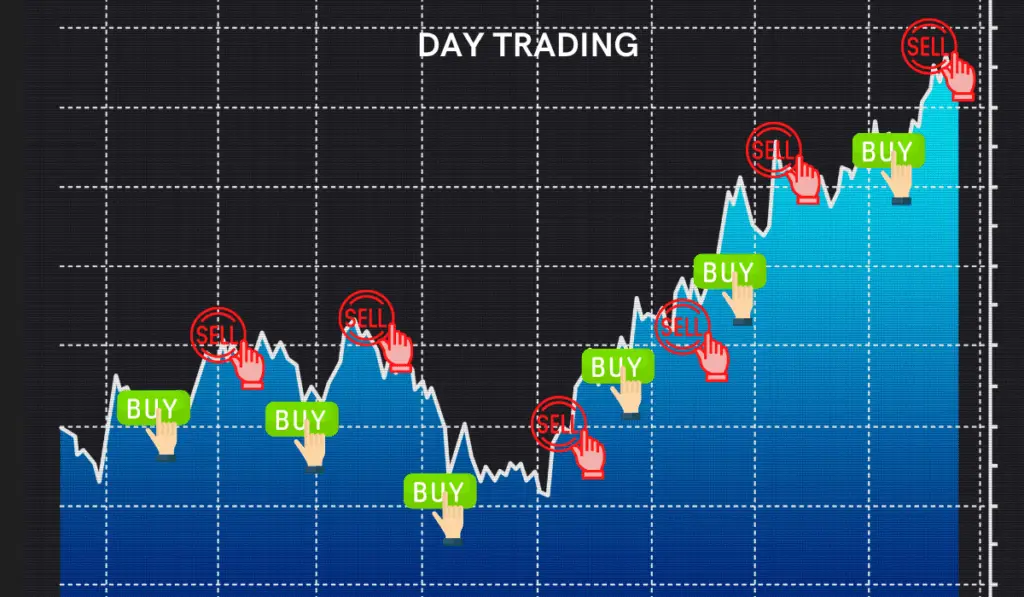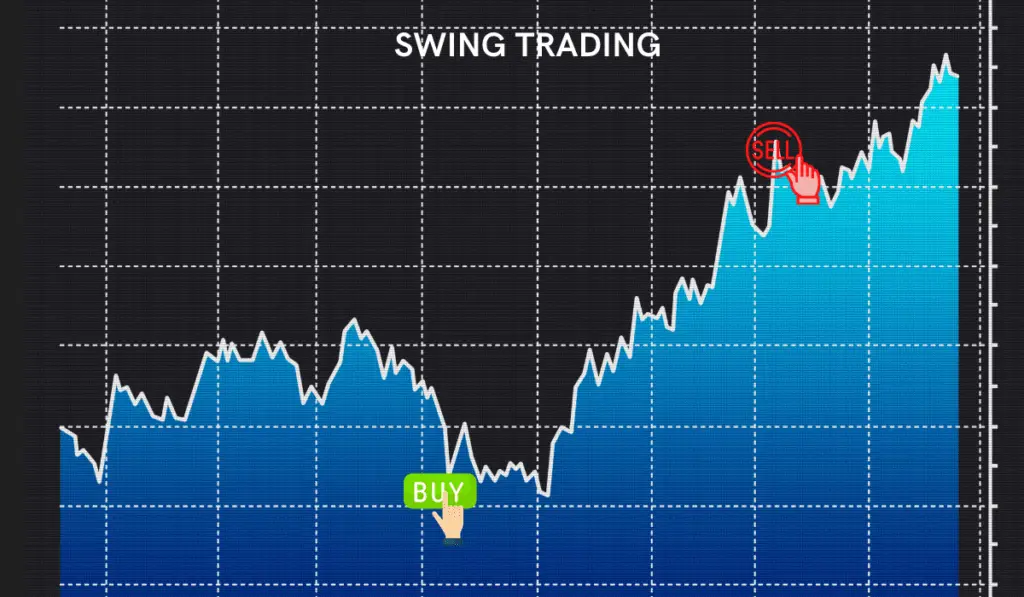Day trading and swing trading are two active trading strategies that seek to profit from short-term stock price movements. Chances are that you have heard of these two trading styles before, but which one is better? Let’s take a look and see what day trading and swing trading are, how they differ, and some of the risks associated with them.
Summary
- The main difference between day trading and swing trading is the time frame you trade.
- Day trading involves buying and selling financial instruments multiple times within the same day, with no overnight positions.
- Swing trading involves holding positions for multiple days, weeks, and even months.
- Capital requirements are different for day traders and swing traders depending on the financial instruments they trade.
- Day trading can offer higher profit potential than swing trading
Day Trading Explained

The discipline of day trading is a strategy in which traders rapidly buy and sell stocks in a single day without holding any overnight positions. All trades will be opened and closed on the same day. Day trading involves the use of technical analysis, chart patterns, price action, and many other strategies and tools to turn a profit.
Recommended Reading: The Best Day Trading Books for Serious Traders
The goal of day traders is to find intraday opportunities in stocks, futures, options, commodities, or currencies to make a profit. Day traders will usually make multiple trades in a single day and tend to use strict rules for managing and preserving their capital.
Day trading carries significant risk if you aren’t comfortable with volatility and know how to control your losses and emotions. A study done by the U.S. Securities and Exchange Commission estimates that roughly 70% of day traders end up losing money in the first six months of trading.
Pros and Cons of Day Trading
| Pros | Cons |
|---|---|
| There is no overnight risk | Trading fees can be much higher than swing trading |
| You can use leverage to grow your capital quicker | There is a much higher learning curve associated with day trading |
| The possibility to trade from anywhere in the world | Day trading involves a lot of emotional ups and downs |
| Ability to use automated systems to improve your trading and limit your time on research | It is very research-intensive and involves extreme discipline |
| Carries more profit potential than swing trading | Success is tied to the current market environment |
Swing Trading Explained

The discipline of swing trading involves identifying price swing opportunities in stocks, futures, commodities, or currencies to make a profitable trade. Trades can take place over a few days, weeks, or even months. Like day trading, swing trading also relies on technical analysis to find trading opportunities, but usually on a longer time frame.
Recommended Reading: How to Find Low Beta Stocks to Invest In
Swing traders also take into account economic and fundamental factors that can impact the price of financial instruments. The “swings” in swing trading are meant to serve as entry and exit points for a financial instrument based on its weekly or monthly price behavior.
Swing trading involves holding positions overnight, you can experience greater levels of price volatility due to overnight price risk. Stocks or other financial assets can experience price gaps from one trading session into the next and cause big PnL swings in your position and portfolio.
Since swing trading can carry unpredictable levels of risk, swing traders will tend to have smaller position sizes and stricter stop-loss levels than day traders.
Pros and Cons of Swing Trading
| Pros | Cons |
|---|---|
| Swing trading doesn’t cost as much as much day trading due to the lower trading frequency | Exposure to overnight and weekend price gaps |
| Requires less of a learning curve when compared to day trading. | Timing the market can be very difficult |
| Does not require you to always be in front of your monitor and can be done part-time | The possibility of missing good trades |
| Swing trading doesn’t require the best technology or tools | Trades required a longer period to work out in your favor |
| Doesn’t have the same capital requirements as day trading | Losses can sometimes be much larger due to the longer holding period |
Difference Between Day Trading and Swing Trading
The main difference between day trading and swing trading is the duration and time frame of the trades. Day trading involves a higher frequency of trading while swing trading involves less frequency.
If you plan to day trade, be ready to be in front of your computer monitor for the majority of your day. The same isn’t required for swing trading since your holding period tends to be longer.
Another difference between the two is that day trading is heavily reliant on fast data, execution, and low fees while the same can’t be said for swing trading. Most swing traders aren’t as worried about execution speed and fees as day traders are.
Day traders on the other hand need to be extremely conscious of their execution speed and fees because it impacts their bottom line significantly.
Capital Requirements for Day Trading
Since day trading involves making multiple trades within a single day, you must be aware of the pattern day trading rule (PDT) and the minimum capital requirements associated with it.
Under the pattern day trading rule, pattern day traders are required to hold no less than $25,000 in their margin accounts.
Pattern day traders are traders who execute four or more day trades (buy and sell) within 5 business trading days. If your account dips below $25,000, you will be prohibited from making any further trades until your margin account balance is brought up above $25,000.
Conclusion
Knowing difference between day trading and swing trading can help you decide which one is a better fit. You may not necessarily know where your trading style fits right off the bat. As such, we recommend paper trading different swing trading and day trading strategies to get a feel for where you are better suited.
FAQ’s
Is Swing Trading Safer Than Day Trading?
Both swing trading and day trading come with their own set of risks. Generally speaking, the risk of loss tends to be lower with swing trading because of a longer time horizon.
